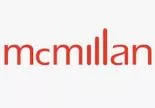- within Transport and Insolvency/Bankruptcy/Re-Structuring topic(s)
- with Senior Company Executives, HR and Finance and Tax Executives
- with readers working within the Accounting & Consultancy, Banking & Credit and Business & Consumer Services industries
An underlying cause of the recent global financial crisis was that banks had a "build-up of excessive on- and off-balance sheet leverage."1 Many of the hard-hit banks had accumulated this "excessive leverage"2 while maintaining a strong risk-based capital ratio. The Basel Committee of Banking Supervision (BCBS), an international banking regulator, has recommended a new system it believes will help to prevent a reoccurrence of the disastrous effect the financial crisis had on banks and will ensure greater consistency in reporting– the leverage ratio. BCBS released its Basel III leverage ratio framework and disclosure requirements3 (Basel III Leverage Ratio) in January 2014. Although Canadian banks came out of the financial crisis relatively unscathed compared to American and European banks, the Office of the Superintendant of Financial Institutions (OSFI) followed the recommendations of BCBS and released a draft of its new leverage requirements based on the Basel III Leverage Ratio in July.4 The new requirements would apply to banks, bank holding companies, federally regulated trust and loan companies and cooperative retail associations in Canada and would be used by OSFI to assess the "capital adequacy of an institution."5 The draft guidelines are open for commentary until September 12, 2014.
In Canada, OSFI implemented the Asset-Capital Multiple (ACM) model in the 1980s, which will be replaced by the Basel III Leverage Ratio. The ACM model restricts the amount of leverage for a financial institution based on that institution's given level of capital. This is in contrast to the risk-based model, whereby the Common Equity Tier I Ratio (Tier I Capital) sets out the amount of capital against the risk-weighted assets. A given lender determines the risk weight based on what they know about their customers and the nature of the lender's assets; the "riskier the asset, the higher the weighting."6 To ensure consistency in the assessment of financial institutions, the leverage ratio is meant to complement the risk-weighting system.
In January 2014, BCBS introduced this new leverage ratio in an attempt to create a simple, transparent and comparable measure. OSFI will implement the new leverage ratio and will require banks, bank holding companies, federally regulated trust and loan companies and cooperative retail associations in Canada to maintain a ratio of 3% starting in Q1 of 2015. The Basel III Leverage Ratio is calculated by taking the capital measure and dividing it by the exposure measure.7 The capital measure is the Tier I capital measure set out in Chapter 2 of the Capital Adequacy Requirements Guideline.8 The exposure measure will be comprised of: on-balance sheet exposures, derivative exposures, securities financing transaction exposures and off-balance sheet items.9
(a) On-balance sheet exposures: All balance sheet assets must be included as part of the exposure measure. However, for consistency, items deducted under the Tier I Capital should be excluded from the exposure measure. Liability items may not be deduced (e.g. gains/losses on fair valued liabilities).
(b) Derivative exposures: These will be calculated as the replacement cost plus an add-on for potential future exposure. There may be an alternate treatment if it is covered by an eligible bilateral netting contract.10
(c) Securities financing transaction exposures (SFTs): Where an institution acts as a principal, it must include gross SFT assets and a measure of its counterparty credit risk in its exposure measure. The effects of a bilateral netting agreement will be recognized on a counterparty by counterparty basis subject to certain conditions described in paragraph 47 of the draft guidelines.
(d) Off-balance sheet items: These items will be converted into credit exposure equivalents by applying credit conversion factors (CCF) to the notional amount of the exposure. The exposure measure will include the amount after the CCF has been applied. Some of the items included as being off-balance sheet are: direct credit substitutes, forward asset purchases and transaction-related contingent requirements (e.g. performance bonds, bid bonds, warranties and standby letters of credit related to particular transactions).11
Currently, ACM requires Canadian banks to hold capital equal to at least 5% of their total assets. The leverage ratio proposed by BCBS, and now by OSFI, would require that institutions meet or exceed a Basel III Leverage Ratio of 3%. The leverage ratio includes a more narrow definition of "capital", utilizing the more restrictive class of Tier 1 Capital rather than Total Capital, and includes more off-balance sheet exposures on the asset side.
US regulators have proposed a minimum standard of 5-6% for US banks. OSFI's deputy superintendant, Mark Zelmer, explained that Canada is able to have a lower threshold because mortgage loans are often backed by the government, and as such they hold little risk for the financial institutions lending the funds.12 According to Zelmer, the lower threshold will also give OSFI greater ability to supervise institutions by enabling OSFI to impose more stringent requirements, in the form of authorized leverage ratios, on specific institutions than they would be able to do under a higher ratio.13
The authorized leverage ratios are confidential and therefore additional ratios imposed on institutions will not be made public. The factors used in determining an individual financial institution's authorized leverage ratio are: the potential impact on the change of the institution's risk-based capital ratios compared to internal targets and OSFI targets, the effectiveness of operational management, adequacy of capital and liquidity management processes and procedures, intervention history related to the institution, risk profile and business lines of the institution and business plans.14 Some industry observers note that the lack of disclosure of the authorized leverage ratio will prevent a true comparison of financial institutions to their industry peers.
The Basel III Leverage Ratio guidelines go on to describe specific requirements related to the disclosure of leverage ratios. The disclosure requirements have been implemented by OSFI in their Public Capital Disclosure Requirements related to Basel III Leverage Ratio guideline (Disclosure Requirements Guideline).15 The Disclosure Requirements Guideline distinguishes between Domestic Systemically Important Banks (DSIBs) and all other institutions (non-DSIBs). DSIBs will have to begin disclosing their leverage ratios for Q1 2015 reporting, whereas non-DSIBs will be required to start reporting at the end of 2015. The disclosure requirements for DSIBs include: a summary comparison table, a common disclosure template, reconciliation with public financial statements, and others.16 Non-DSIBs must use Table 3 in Annex II of the Disclosure Requirements Guideline, which requires them to provide a breakdown on an "all-in" basis.
Footnotes
1 Basel Committee on Banking Supervision, "Basel III leverage ratio framework and disclosure requirements," (Bank for International Settlements, January 2014) at 1.
2 Ibid.
3 Ibid.
4 See the OSFI draft guidelines.
5 Leverage Requirements Guideline (Office of the Superintendant of Financial Institutions, July 2014).
6 John Greenwood, "Do Canadian Banks Measure up on Leverage?", Financial Post (16 July 2013).
7 Leverage ratio = Capital Measure / Exposure Measure
8 See chapter 2.
9 Ibid at para 12 & 14.
10 See paras 27-32 of the draft guidelines for more details.
11 Supra Note 5 at paras 55-57.
12 Tim Kiladze, "Canada's bank watchdog adopting Basel-style soundness measure", The Globe and Mail (14 January 2014).
13 Mark Zelmer (Remarks delivered at the 2014 RBC Capital Markets Canadian Bank CEO Conference, 14 January 2014).
14 Supra Note 5 at para 7.
15 Public Capital Disclosure Requirements related to Basel III Leverage Ratio (Office of the Superintendant of Financial Institutions, July 2014).
16 See Part 4 for more details on each disclosure requirement; the other requirement provides that DSIBs must explain the cause of material changes between reporting periods.
The foregoing provides only an overview and does not constitute legal advice. Readers are cautioned against making any decisions based on this material alone. Rather, specific legal advice should be obtained.
© McMillan LLP 2014



